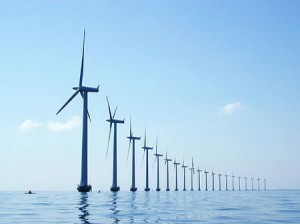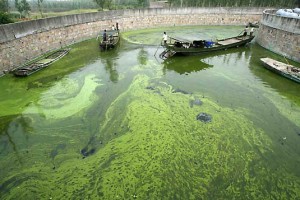- Energy is the ability to do work.
- The energy we use to power our cars, light our homes, heat and cool our living spaces, pump water, and power our every day lives is obtained from an energy source. Most energy sources are derived from natural resources – naturally occurring materials that are valuable to people and/ or wildlife.
- Natural resource-based energy sources are classified as “renewable” or “nonrenewable”, and can also be classified as “clean” or “dirty”.
- Renewable energy sources, such as solar energy, wind energy, biomass-derived energy (plant sources), and hydropower can be replenished in reasonable geologic time (a few decades).
- Nonrenewable energy sources, such as fossil fuel-based energy (i.e. coal, oil, and natural gas) and uranium, used to produce nuclear power, cannot be replenished in reasonable geologic time. These energy sources, with the exception of uranium, are being consumed at a fast rate, and we risk exhausting the world’s supply of nonrenewable energy sources.
- Renewable and nonrenewable energy sources can be classified as “clean” or “dirty” depending on their impact on the environment. Some hydropower sources are “dirty” because they pollute rivers and consume large quantities of fresh water, which is scarce in some parts of the United States. Fossil fuel energy release carbon dioxide, leading to ocean acidification, acid rain, and global warming.

Burning fossil fuels releases carbon dioxide into the atmosphere, which is can be harmful for the environment and human health.
- In the United States, we derive most of our energy from nonrenewable fossil fuels. Renewable energy accounts for only about 7% of our total energy supply.
- In order to minimize the negative environmental impacts of fossil fuels, and to ensure that we will have energy for years to come, scientists are developing clean, renewable energy options.
- Hydropower is power derived from the energy of moving water. It is a renewable resource that can be accessed in a clean, environmentally responsible manner.
- The ocean is constantly moving. The energy crated from this movement of the ocean can be captured and converted into useful forms of energy using a variety of technologies.
The ocean has the potential to provide renewable hydropower in a variety of ways. Let’s explore a few of the latest technologies:
1. Ocean wave energy is captured directly from surface waves or from pressure changes below the water’s surface caused by waves.
- A wave farm is an area where wave energy is extracted from the ocean for conversion into electrical power.
- Wave power devices are used to harvest ocean wave energy. These devices can capture wave energy nearshore, offshore, and open ocean environments.
- Wave energy varies throughout the world, and some places do not have waves large or consistent enough to produce energy effectively.
2. Tidal power is a form of energy that converts the energy of tides into electrical energy.
- Tidal power is captured with underwater turbines. Turbines convert moving energy into mechanical power, which is then used to generate electricity.
- Tidal power is generated best when there is a large tidal range (the vertical distance between the high and low tide each day).
3. Offshore wind farms are groups wind of turbines located far from the coast. Similarly to tidal turbines, they convert wind energy mechanical energy, which is further converted into electricity.
- Wind farms can also be located on land, but offshore wind farms are more efficient because they can use larger turbines and the wind is often stronger.
4. Marine current energy is captured from the movement of currents. Like tidal power, marine current energy is harvested using underwater turbines.
- Marine current power is not yet widely used, but currently, engineers are developing new technologies that will enable us to more efficiently capture the energy supplied by currents.
- Scientists estimate that capturing 1/1000 of the Gulf Stream’s energy would supply Florida with 35% of its total energy needs.
5. Ocean Thermal Energy Conversion (OTEC) uses a heat engine – a device that converts heat energy into useful power- to produce energy from the temperature differences between cooler deep ocean water and warmer surface ocean water.
- In order for OTEC to work efficiently, the temperature difference between the surface and deep water must be approximately 40°F (20°C).
6. Algae (any living thing found in an aquatic environment that obtains energy from sunlight through photosynthesis) can be used as a biofuel. Biofuel is fuel derived from living things, usually plant mass.
- Algae can be harvested from the ocean or farmed very efficiently in small areas.
- Algae is converted into a form of oil and burned to produce energy. This process does not release the same harmful pollutants that fossil fuels release when they are burned.
- Energy generated from the ocean has huge potential to reduce pollution and its negative effects on the environment, but there are challenges associated with obtaining energy from the ocean.
- Turbines and other technologies are expensive to develop, build, and install.
- The effects of these technologies on marine wildlife and ecosystems are not fully understood.
Podcast: Harnessing the Gulf Stream
Review Questions
- What is a renewable energy source? Why does the ocean produce renewable energy?
- What is hydropower? Is it a renewable energy source?
- List three forms of renewable energy that can be obtained from the ocean.
- List one of the challenges associated with obtaining clean, renewable energy from the ocean.
Glossary
Algae: Any living thing found in an aquatic environment that obtains energy from sunlight through photosynthesis.
Biofuel: Fuel derived from living things; usually plants.
Current: The steady flow of water in a prevailing direction.
Energy: The ability to do work.
Energy Source: A source from which energy can be obtained.
Fossil Fuel: Fuel consisting of the remains of organisms preserved in rocks beneath Earth’s surface over millions of years; includes petroleum, coal, and natural gas.
Gulf Stream: A warm ocean current that flows from the Gulf of Mexico northward through the Atlantic Ocean.
Heat Engine: A device that converts heat energy into useful power.
Hydropower: Power derived from the energy of moving water.
Marine Current Power: Energy captured from the movement of currents.
Natural Resource: A naturally occurring material that is valuable to people and/ or wildlife.
Nonrenewable Energy: Energy derived from a source that we are using up but cannot replace.
Nuclear Power: Energy derived from the splitting of a large nucleus into multiple smaller nuclei.
Ocean Thermal Energy Conversion (OTEC): A process that uses the temperature differences that exist between deep and shallow waters to run a heat engine.
Ocean Wave Energy: Energy captured directly from surface waves or from pressure changes below the surface of the water that are caused by waves.
Offshore Wind Farm: A group of turbines located far from the coast; used to generate wind power.
Renewable Energy: Energy derived from a source that is naturally replenished over time.
Tidal Power: A form of energy that converts the energy of tides into useful forms of power.
Tidal Range: The vertical distance between the high and low tide each day.
Turbine: A machine that converts moving energy into mechanical power, which can then be used to generate electricity.
Wave power devices: Machines used to to harvest ocean wave energy.







